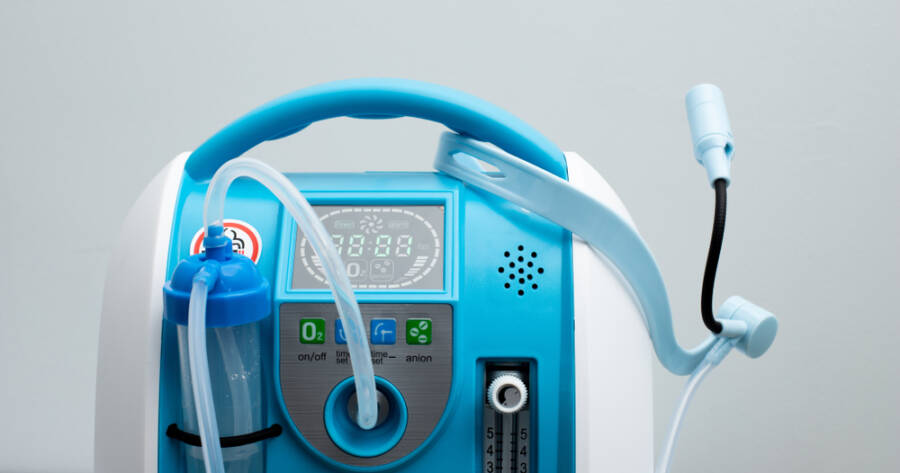Portable oxygen concentrators (POCs) have become essential for individuals requiring oxygen therapy outside their homes, offering mobility and independence. Finding a suitable POC covered by Medicare can significantly alleviate the financial burden of ownership. These devices come with various features and benefits tailored to different needs. Understanding Medicare’s coverage criteria and knowing which models may be included can help you make an informed decision.
Understanding Medicare’s Coverage for Portable Oxygen Concentrators
Medicare may cover portable oxygen concentrators under certain conditions, typically categorized under durable medical equipment (DME). However, coverage is conditional and generally applies when use is deemed medically necessary by a healthcare provider. For Medicare to potentially cover a POC, a physician must certify that an oxygen concentrator is necessary for your health and mobility.
Medicare Part B usually provides coverage for approved oxygen equipment, including rental agreements. The concept of ownership vs. rental is important, as Medicare typically finances the rental costs, with recipients possibly being responsible for a portion of the expenses, known as co-insurance, after meeting their deductible. Knowing and understanding these requirements helps set proper expectations and plan financially.
Key Features to Consider in a POC
When selecting a portable oxygen concentrator, several key factors should be considered to ensure it meets your individual needs. Portability is often a priority; lightweight and easily transported models could empower you to maintain an active lifestyle. Such models generally weigh between 3 to 10 pounds and come with carrying options like backpacks or shoulder straps.
Battery life is another crucial consideration. POCs with longer battery durations allow users to engage in activities for extended periods without interruptions. Models offering both continuous flow and pulse-dose delivery might cater to specific user preferences, so assessing the flow setting requirements for your oxygen therapy is essential.
Finally, noise levels and convenience features such as user-friendly controls, alarms, and easy maintenance can influence satisfaction and usability. Models equipped with alarms for oxygen purity and maintenance alerts might help ensure reliable performance and timely attention to device mechanics.
Top Portable Oxygen Concentrators Covered by Medicare
While coverage can vary, here are some prominent POCs possibly covered by Medicare, known for their efficiency and user-friendly functionalities:
- Inogen One G5: Renowned for its lightweight design, the Inogen One G5 offers an impressive 6.5-hour battery life at a typical setting and features a quiet operation. Its five flow settings accommodate various needs, providing flexibility in oxygen delivery. This model is often praised for its portability and ease of use, suited for active individuals.
- Philips Respironics SimplyGo: This concentrator balances efficiency with portability, offering continuous flow and pulse-dose options. Weighing approximately 10 pounds, it includes a durable design for everyday use. The SimplyGo typically supports those requiring higher oxygen levels, while offering FAA approval for air travel convenience.
- CAIRE FreeStyle Comfort: With an ergonomic design and weighing around 5 pounds, the FreeStyle Comfort device offers up to four hours of battery life with adjustable oxygen delivery. Users often admire its efficiency and convenient operation. Bluetooth connectivity may allow tracking and reporting through a mobile app, enhancing user engagement.
Navigating the Medicare Approval Process
Securing Medicare coverage begins with obtaining a thorough medical evaluation from a physician, highlighting the necessity of oxygen therapy. Documentation proving that a portable oxygen concentrator is essential for your mobility and health is a prerequisite for getting coverage consideration.
After obtaining the necessary documentation, contacting approved suppliers who provide Medicare-covered DME is the next step. Suppliers can verify that the POC models you’re interested in are indeed covered under Medicare, aside from managing rental agreements.
Regular communication with both your healthcare provider and supplier ensures that your needs and conditions are documented and that Medicare coverage is applied accurately. Additionally, being informed about the terms of the rental agreement, such as length, servicing, and maintenance provisions, can avoid unexpected issues.
Find Your Best Fit with Confidence
Navigating Medicare coverage for portable oxygen concentrators necessitates understanding the specifics of coverage, weighing personal needs and preferences, and choosing the right device. By evaluating factors like portability, battery life, and Medicare’s distinct requirements, you can make an informed choice that enhances your lifestyle and independence.
Connecting with approved suppliers familiar with Medicare’s provisions further simplifies the process, ensuring you access the best portable oxygen concentrator geared to support your health and mobility efficiently and effectively. This journey ultimately empowers you to maintain quality of life with greater assurance and freedom.

